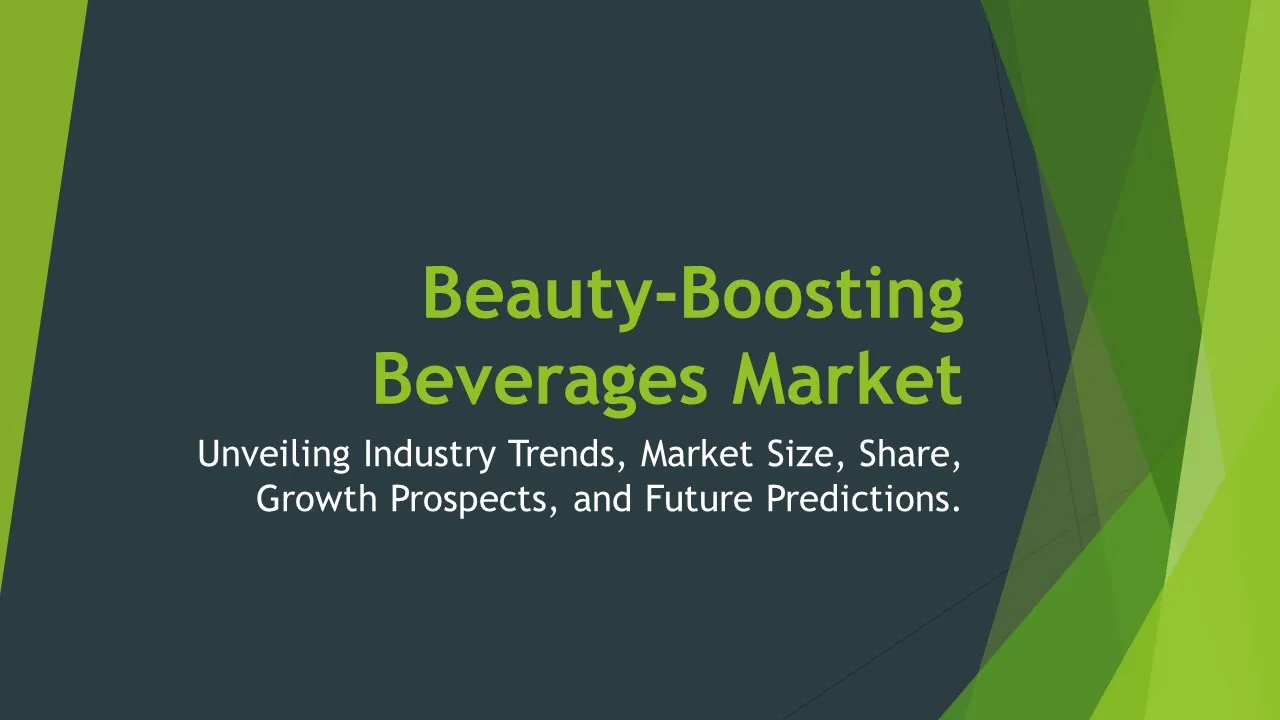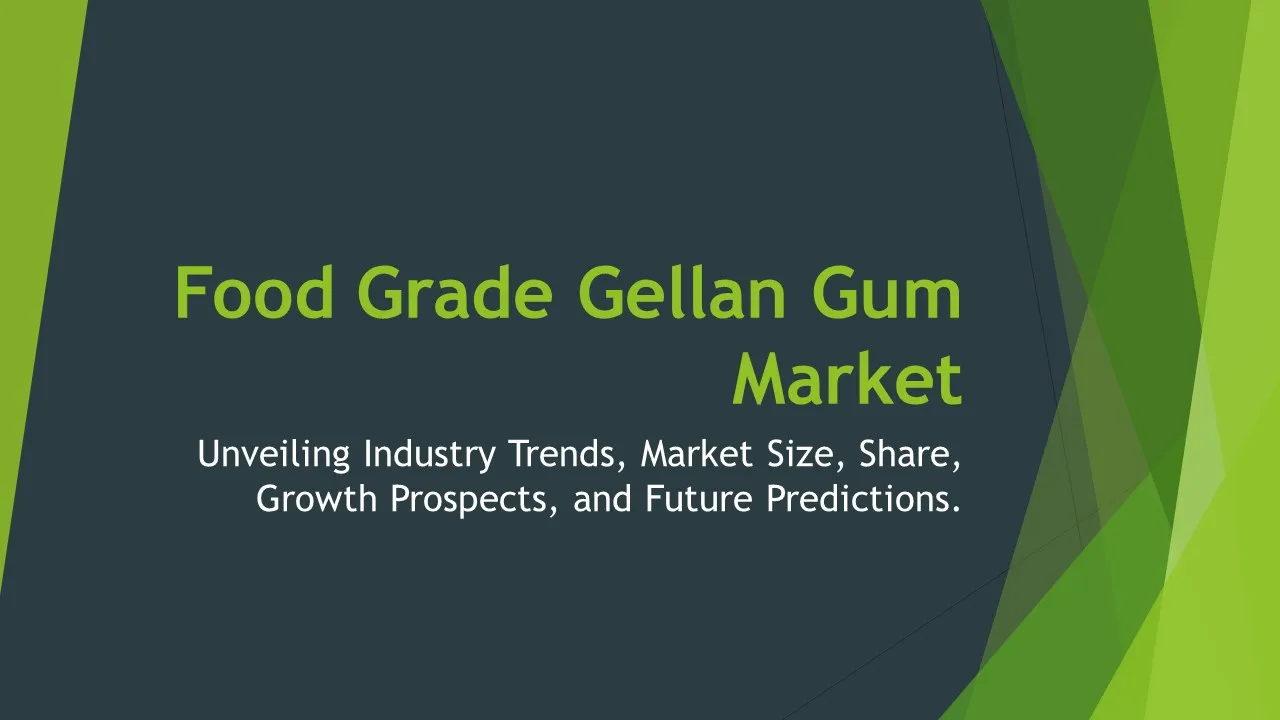Alcoholic Beverages Sales
Alcoholic Beverages Market Segments - by Product Type (Beer, Wine, Spirits, Cider, Ready-to-Drink), Distribution Channel (On-Trade, Off-Trade, Online Retailers, Convenience Stores, Specialty Stores), Sales Channel (Direct Sales, Indirect Sales), Packaging Type (Glass Bottles, Cans, PET Bottles, Others), and Region (North America, Europe, Asia Pacific, Latin America, Middle East & Africa) - Global Industry Analysis, Growth, Share, Size, Trends, and Forecast
- Report Preview
- Table Of Content
- Segments
- Methodology
Alcoholic Beverages Sales Market Outlook
The global alcoholic beverages market is valued at approximately USD 1.5 trillion in 2023 and is projected to grow at a compound annual growth rate (CAGR) of around 5.2% from 2023 to 2033. This growth can be attributed to several factors, including changing consumer preferences toward premium products, the rise in disposable incomes across various demographics, and an increase in social gatherings and celebrations where alcoholic beverages are a staple. Furthermore, the growing trend of craft and artisanal alcoholic beverages is driving innovation and diversification within the market, leading to the introduction of unique flavors and production methods, which are attracting a broader audience. Additionally, the expansion of the online retail sector is making these products more accessible, enhancing market growth.
Growth Factor of the Market
One of the primary growth factors of the alcoholic beverages market is the increasing demand for premium and craft products. As consumers become more discerning, they are willing to pay a premium for high-quality drinks that offer unique flavors and experiences. This trend is also fueled by the rise of social media, where consumers share their experiences, leading to increased awareness and interest in artisanal brands. Additionally, the growing acceptance of moderate alcohol consumption as part of a balanced lifestyle is encouraging a shift towards premium beverages that prioritize quality over quantity. Furthermore, the increasing number of social events, parties, and celebrations is driving the consumption of alcoholic beverages. The expansion of e-commerce platforms also plays a significant role, as more consumers are turning to online platforms for the convenience and variety they offer. Lastly, innovative marketing strategies targeting millennials and Gen Z consumers are creating a lasting impact on purchasing behaviors, further fueling market growth.
Key Highlights of the Market
- The global alcoholic beverages market is projected to reach USD 2 trillion by 2033.
- The premium segment within the market is growing at a CAGR of 7% due to rising consumer preferences.
- Online retail sales of alcoholic beverages have surged, with an expected growth rate of 6% annually.
- Craft beer continues to gain popularity, contributing significantly to market dynamics.
- The Asia Pacific region is anticipated to witness the highest growth rate over the forecast period, reflecting changing consumption patterns.
By Product Type
Beer:
Beer remains the most widely consumed alcoholic beverage globally, accounting for a significant share of the market. The popularity of beer is largely attributed to its versatility and the variety of flavors available, ranging from light lagers to rich stouts. Craft beer, in particular, has seen remarkable growth, appealing to consumers seeking unique taste experiences. The trend toward local breweries and artisanal production methods emphasizes quality and innovation, leading to the introduction of various styles and flavors. Beer festivals and events have also gained popularity, promoting the consumption of craft and specialty brews, which is driving overall market growth. Additionally, health-conscious consumers are increasingly opting for low-alcohol and alcohol-free beer options, expanding the product range within this segment.
Wine:
The wine segment of the alcoholic beverages market has experienced steady growth, fueled by an increase in wine consumption globally, particularly among millennials who are exploring wine as a sophisticated beverage choice. Various wine types, including red, white, rosé, and sparkling wines, have found their place in the market, appealing to diverse consumer preferences. Wine tourism is also on the rise, encouraging consumers to explore vineyards and discover new wines, thus boosting sales. Moreover, the introduction of boxed wine and canned wine has made the product more accessible, especially for younger consumers looking for convenience. Organic and biodynamic wines are gaining traction, addressing the growing demand for sustainable and health-conscious options within the market.
Spirits:
Spirits, including vodka, whiskey, rum, gin, and tequila, constitute a rapidly growing segment of the alcoholic beverages market, often favored for their versatility in cocktails and mixed drinks. The premiumization trend has led to a surge in sales of higher-end spirits, as consumers are willing to invest in quality offerings. The craft cocktail movement has also driven interest in unique and artisanal spirits, contributing to the growth of this segment. Innovations in flavor profiles and the introduction of limited-edition releases further entice consumers to explore new options. Additionally, the rise in cocktail culture and the popularity of home mixology, especially during the pandemic, have positively influenced the demand for spirits.
Cider:
Cider, a fermented beverage made from apple juice, is capturing the attention of consumers looking for alternative alcoholic options. The increase in health-conscious behaviors has led to the popularity of cider, particularly among those who prefer gluten-free options. Cider is often perceived as a lighter and refreshing alternative to beer and is gaining traction in various markets worldwide. The variety of flavors, including fruit-infused and spiced ciders, allows consumers to explore different taste experiences. The growth of cider festivals and events has also contributed to increasing its visibility and popularity. Consequently, cider's market share is steadily growing as consumers seek out innovative and flavorful alternatives.
Ready-to-Drink:
The ready-to-drink (RTD) segment has witnessed significant growth in recent years, driven by the demand for convenience and portability. Pre-mixed cocktails and flavored alcoholic beverages are becoming increasingly popular, particularly among younger consumers who value ease and accessibility. The variety of flavors and options available in the RTD segment caters to diverse tastes, making them an attractive choice for social gatherings and events. Moreover, brands are focusing on creating lower-calorie and health-conscious options, aligning with the trends towards wellness. The growth of RTD products is also supported by effective marketing strategies and collaborations with popular beverage brands to create unique offerings that stand out in a crowded market.
By Distribution Channel
On-Trade:
The on-trade distribution channel encompasses establishments such as bars, restaurants, and pubs where alcoholic beverages are consumed on the premises. This channel has historically been a vital contributor to the alcoholic beverages market, as socializing in these environments fosters increased consumption. As consumers increasingly seek experiences over products, on-trade venues are adapting to provide unique offerings, including craft cocktails and specialized tasting events. This segment is expected to continue to grow as the hospitality industry rebounds from the pandemic, with establishments focusing on enhancing the consumer experience through innovative menus and ambiance. The on-trade channel often sees a surge during weekends and holidays, creating opportunities for significant revenue generation.
Off-Trade:
The off-trade distribution channel includes retail outlets such as supermarkets, convenience stores, and liquor shops where consumers purchase alcoholic beverages for home consumption. This channel has experienced considerable growth, particularly during the COVID-19 pandemic when consumers turned to home drinking. The convenience of purchasing from local stores, coupled with a broader range of products available, has propelled sales in this segment. Additionally, promotions and discounts in off-trade outlets have attracted consumers looking for value. As consumers continue to enjoy home gatherings and meals paired with drinks, this channel's relevance will remain significant within the overall alcoholic beverage landscape.
Online Retailers:
The rise of online retailing has revolutionized the way alcoholic beverages are sold, providing consumers with unprecedented convenience and access to a wide variety of products. E-commerce platforms have seen a significant increase in sales, driven by changing consumer behaviors and preferences for online shopping. Online retailers offer the advantage of easy price comparisons and home delivery, appealing to consumers looking for convenience. Additionally, many companies have invested in their online presence, enhancing user experience through engaging websites, personalized recommendations, and subscription services. The ease of access to premium and niche brands online has further amplified the growth of this distribution channel, allowing consumers to explore and discover products they may not find in traditional retail settings.
Convenience Stores:
Convenience stores have emerged as a critical distribution channel for alcoholic beverages, catering to consumers seeking quick and easy access to their favorite drinks. These stores are strategically located, making them an attractive option for on-the-go purchases. The growth of convenience stores has been bolstered by urbanization and the fast-paced lifestyles of consumers, who appreciate the ability to grab beverages without extensive planning. Additionally, many convenience stores are expanding their selections to include craft beers, premium wines, and ready-to-drink cocktails to meet evolving consumer preferences. As competition in the convenience sector intensifies, these stores are likely to continue innovating and enhancing their alcoholic beverage offerings.
Specialty Stores:
Specialty stores, which focus on niche markets or specific categories of alcoholic beverages, have gained traction as consumers seek unique and high-quality products. These stores often provide a curated selection of craft beers, wines, and spirits, appealing to enthusiasts and discerning consumers. The knowledgeable staff at specialty stores can offer personalized recommendations, enhancing the overall shopping experience. The rise of wine and beer clubs, which often operate through specialty stores, has further contributed to this segment's growth, as consumers are introduced to new products through curated subscription boxes. By focusing on quality and experience, specialty stores are carving out a significant niche within the alcoholic beverages market.
By Sales Channel
Direct Sales:
Direct sales refer to manufacturers selling their products directly to consumers, bypassing traditional retail channels. This approach allows brands to maintain control over pricing, branding, and customer engagement, creating a more personalized experience for consumers. Direct sales have become increasingly popular, particularly with the rise of e-commerce and direct-to-consumer models. By utilizing social media and online platforms, companies can effectively reach their target audience and drive sales. Many brands have adopted innovative marketing strategies, such as offering exclusive products, limited editions, or personalized services to enhance customer loyalty. This sales channel is expected to grow as more consumers appreciate the convenience of buying directly from brands.
Indirect Sales:
Indirect sales involve selling alcoholic beverages through intermediaries such as distributors, wholesalers, and retail outlets. This sales channel has historically been the backbone of the alcoholic beverage industry, allowing brands to reach a broader audience without investing heavily in their distribution networks. The indirect sales model enables companies to leverage existing relationships and distribution capabilities of wholesalers and retailers, facilitating market penetration. As consumer preferences evolve and new products are introduced, effective collaboration between manufacturers and distributors is essential to ensure that the right products reach market quickly. Additionally, the rise of e-commerce is reshaping indirect sales strategies, as brands adapt to the increasing importance of online retailing.
By Packaging Type
Glass Bottles:
Glass bottles remain the traditional and most recognizable packaging choice for alcoholic beverages, particularly for wine and spirits. The premium feel and aesthetic appeal of glass packaging enhance the perception of quality and luxury, making it a popular choice among consumers. Glass is also a material that preserves the integrity and flavor of the beverage, which is particularly important for products like wine and craft beers. However, the heavier weight of glass bottles can pose challenges for transportation and increase shipping costs. Nevertheless, many brands continue to prioritize glass packaging due to its sustainability and recyclability, aligning with the growing consumer demand for environmentally friendly options.
Cans:
Cans have gained popularity in the alcoholic beverages market, particularly for beer and ready-to-drink cocktails, due to their convenience and portability. The lightweight and shatterproof nature of cans make them ideal for outdoor events, parties, and travel. Additionally, modern canning technology allows for innovative designs and eco-friendly materials, appealing to consumers looking for sustainable options. Cans also provide excellent protection from light and oxygen, preserving the taste and freshness of the product. The rise of craft breweries has led to a surge in canned craft beers, making this packaging type a significant player in the market as brands embrace consumer trends toward portability and convenience.
PET Bottles:
PET bottles are becoming an increasingly popular packaging option for alcoholic beverages, particularly in markets where lightweight and shatterproof options are desirable. The use of PET plastic allows brands to offer larger volume products at a more affordable price, making them attractive for consumers seeking value. PET bottles are often used for ready-to-drink beverages and sports drinks containing alcohol, capitalizing on the trend of convenience and portability. However, the perception of quality associated with PET packaging may deter some consumers looking for premium options. Nevertheless, brands are developing innovative PET designs and promoting their recyclability to align with consumer preferences for sustainable solutions.
Others:
This category includes alternative packaging types, such as boxes, kegs, and pouches, which cater to specific consumer needs and preferences. For instance, boxed wine has gained traction among budget-conscious consumers looking for value and convenience. Keg packaging is popular for draft beers in bars and restaurants, allowing for cost-effective and efficient service. Additionally, pouches have emerged as a trendy option for ready-to-drink cocktails, appealing to younger consumers seeking novelty and convenience. These alternative packaging types are expected to continue to evolve as brands explore innovative ways to meet consumer demands and differentiate their products in a competitive market.
By Region
The regional landscape of the alcoholic beverages market is diverse, with North America, Europe, and Asia Pacific being the leading contributors to market growth. North America is the largest market for alcoholic beverages, driven by the high consumption rates of beer and spirits, along with the rising popularity of craft beverages. In 2023, North America accounted for approximately 35% of the global market share, showcasing a substantial growth rate of around 4.5% CAGR over the forecast period. The United States is the primary driver in this region, with a robust on-trade sector and a strong demand for premium and craft products. Additionally, the region's focus on innovation and marketing strategies targeted at millennials further supports its growth trajectory.
Europe follows closely, holding a significant share of the global alcoholic beverages market due to its rich heritage in wine production and a strong culture of beer consumption. The European market is anticipated to reach USD 600 billion by 2033, growing at a CAGR of 5% during this period. Countries such as Germany, France, and the United Kingdom are notable contributors, with Germany being one of the largest beer consumers worldwide. The increasing trend of health-conscious drinking, accompanied by a rise in the popularity of organic wines and craft beers, is reshaping the market dynamics in Europe. Meanwhile, the Asia Pacific region is emerging as a new growth frontier, driven by changing lifestyles and increasing disposable incomes. This region is expected to grow at the highest CAGR of 6.5% over the forecast period as countries like China and India witness a significant surge in alcohol consumption, supported by a growing middle class and evolving social acceptance.
Opportunities
The alcoholic beverages market is ripe with opportunities due to the shifting consumer demographics and preferences. One significant opportunity lies in the growing popularity of low-alcohol and non-alcoholic beverages. As consumers become more health-conscious, there is an increasing demand for products that offer the enjoyment of traditional alcoholic beverages without the side effects associated with high alcohol content. Brands that can innovate and provide flavorful alternatives can capture a significant share of this emerging market segment. Additionally, the rise of e-commerce has opened new avenues for brands to reach consumers directly, allowing them to leverage digital marketing strategies and personalized shopping experiences to foster customer loyalty. The ability to create online communities around products can further enhance brand engagement and awareness.
Moreover, the expansion of the craft beverage movement presents vast opportunities for both new entrants and established brands. Consumers are increasingly drawn to unique, artisanal products that reflect local culture and flavors, which encourages innovation in the creation of specialty brews and spirits. This trend can lead to collaborations between craft producers and established brands, resulting in exciting product launches that appeal to discerning consumers. Furthermore, as the global market becomes more interconnected, brands have the opportunity to expand their presence internationally, tapping into emerging markets with a growing appetite for diverse alcoholic beverages. The potential for product localization and adaptation to regional tastes can create a compelling value proposition in these new markets.
Threats
Despite the growth opportunities, the alcoholic beverages market faces several threats that could impede progress. One of the most significant threats comes from the increasingly stringent regulations surrounding alcohol sales and consumption. Governments worldwide are implementing stricter laws regarding advertising, marketing, and distribution methods, which can create challenges for brands trying to navigate compliance while maintaining profitability. Additionally, fluctuating economic conditions can impact consumer spending on non-essential items, including alcoholic beverages, making market stability a concern. Price sensitivity is becoming a significant factor, especially in economically challenging times, where consumers may prioritize budget-friendly options over premium products.
Another threat to the market is the rising competition from non-alcoholic alternatives, such as functional beverages or health drinks that cater to the same demographic. As consumers increasingly seek healthier lifestyles, brands must adapt to provide options that align with these changing preferences. This shift in consumption patterns could dilute market share for traditional alcoholic beverages if brands do not innovate and evolve. Furthermore, the potential for negative public perception regarding alcohol consumption, particularly among younger consumers focused on wellness and sobriety, presents an ongoing challenge that brands must address through responsible marketing and product offerings.
Competitor Outlook
- Anheuser-Busch InBe
1 Appendix
- 1.1 List of Tables
- 1.2 List of Figures
2 Introduction
- 2.1 Market Definition
- 2.2 Scope of the Report
- 2.3 Study Assumptions
- 2.4 Base Currency & Forecast Periods
3 Market Dynamics
- 3.1 Market Growth Factors
- 3.2 Economic & Global Events
- 3.3 Innovation Trends
- 3.4 Supply Chain Analysis
4 Consumer Behavior
- 4.1 Market Trends
- 4.2 Pricing Analysis
- 4.3 Buyer Insights
5 Key Player Profiles
- 5.1 Anheuser-Busch InBe
- 5.1.1 Business Overview
- 5.1.2 Products & Services
- 5.1.3 Financials
- 5.1.4 Recent Developments
- 5.1.5 SWOT Analysis
- 5.1 Anheuser-Busch InBe
6 Market Segmentation
- 6.1 Alcoholic Beverages Sales Market, By Product Type
- 6.1.1 Beer
- 6.1.2 Wine
- 6.1.3 Spirits
- 6.1.4 Cider
- 6.1.5 Ready-to-Drink
- 6.2 Alcoholic Beverages Sales Market, By Sales Channel
- 6.2.1 Direct Sales
- 6.2.2 Indirect Sales
- 6.3 Alcoholic Beverages Sales Market, By Packaging Type
- 6.3.1 Glass Bottles
- 6.3.2 Cans
- 6.3.3 PET Bottles
- 6.3.4 Others
- 6.4 Alcoholic Beverages Sales Market, By Distribution Channel
- 6.4.1 On-Trade
- 6.4.2 Off-Trade
- 6.4.3 Online Retailers
- 6.4.4 Convenience Stores
- 6.4.5 Specialty Stores
- 6.1 Alcoholic Beverages Sales Market, By Product Type
7 Competitive Analysis
- 7.1 Key Player Comparison
- 7.2 Market Share Analysis
- 7.3 Investment Trends
- 7.4 SWOT Analysis
8 Research Methodology
- 8.1 Analysis Design
- 8.2 Research Phases
- 8.3 Study Timeline
9 Future Market Outlook
- 9.1 Growth Forecast
- 9.2 Market Evolution
10 Geographical Overview
- 10.1 Europe - Market Analysis
- 10.1.1 By Country
- 10.1.1.1 UK
- 10.1.1.2 France
- 10.1.1.3 Germany
- 10.1.1.4 Spain
- 10.1.1.5 Italy
- 10.1.1 By Country
- 10.2 Asia Pacific - Market Analysis
- 10.2.1 By Country
- 10.2.1.1 India
- 10.2.1.2 China
- 10.2.1.3 Japan
- 10.2.1.4 South Korea
- 10.2.1 By Country
- 10.3 Latin America - Market Analysis
- 10.3.1 By Country
- 10.3.1.1 Brazil
- 10.3.1.2 Argentina
- 10.3.1.3 Mexico
- 10.3.1 By Country
- 10.4 North America - Market Analysis
- 10.4.1 By Country
- 10.4.1.1 USA
- 10.4.1.2 Canada
- 10.4.1 By Country
- 10.5 Middle East & Africa - Market Analysis
- 10.5.1 By Country
- 10.5.1.1 Middle East
- 10.5.1.2 Africa
- 10.5.1 By Country
- 10.6 Alcoholic Beverages Sales Market by Region
- 10.1 Europe - Market Analysis
11 Global Economic Factors
- 11.1 Inflation Impact
- 11.2 Trade Policies
12 Technology & Innovation
- 12.1 Emerging Technologies
- 12.2 AI & Digital Trends
- 12.3 Patent Research
13 Investment & Market Growth
- 13.1 Funding Trends
- 13.2 Future Market Projections
14 Market Overview & Key Insights
- 14.1 Executive Summary
- 14.2 Key Trends
- 14.3 Market Challenges
- 14.4 Regulatory Landscape
Segments Analyzed in the Report
The global Alcoholic Beverages Sales market is categorized based on
By Product Type
- Beer
- Wine
- Spirits
- Cider
- Ready-to-Drink
By Distribution Channel
- On-Trade
- Off-Trade
- Online Retailers
- Convenience Stores
- Specialty Stores
By Sales Channel
- Direct Sales
- Indirect Sales
By Packaging Type
- Glass Bottles
- Cans
- PET Bottles
- Others
By Region
- North America
- Europe
- Asia Pacific
- Latin America
- Middle East & Africa
Key Players
- Anheuser-Busch InBe
- Publish Date : Jan 21 ,2025
- Report ID : FO-38924
- No. Of Pages : 100
- Format : |
- Ratings : 4.5 (110 Reviews)









